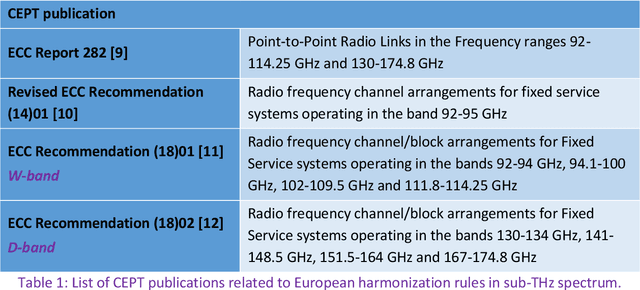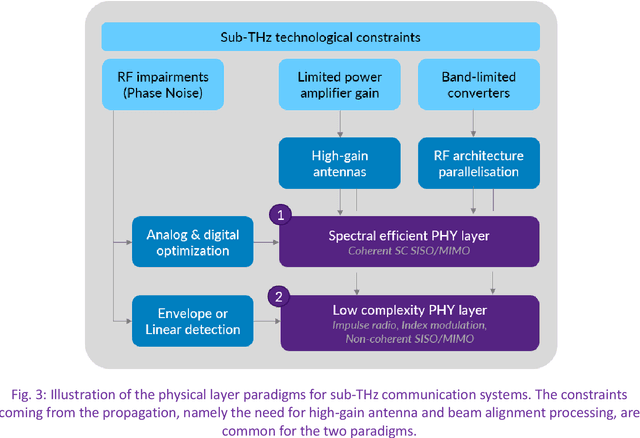Yoann Corre
Analysis of 3GPP and Ray-Tracing Based Channel Model for 5G Industrial Network Planning
Jul 23, 2024Abstract:Appropriate channel models tailored to the specific needs of industrial environments are crucial for the 5G private industrial network design and guiding deployment strategies. This paper scrutinizes the applicability of 3GPP's channel model for industrial scenarios. The challenges in accurately modeling industrial channels are addressed, and a refinement strategy is proposed employing a ray-tracing (RT) based channel model calibrated with continuous-wave received power measurements collected in a manufacturing facility in Sweden. The calibration helps the RT model achieve a root mean square error (RMSE) and standard deviation of less than 7 dB. The 3GPP and the calibrated RT model are statistically compared with the measurements, and the coverage maps of both models are also analyzed. The calibrated RT model is used to simulate the network deployment in the factory to satisfy the reference signal received power (RSRP) requirement. The deployment performance is compared with the prediction from the 3GPP model in terms of the RSRP coverage map and coverage rate. Evaluation of deployment performance provides crucial insights into the efficacy of various channel modeling techniques for optimizing 5G industrial network planning.
Ray-Tracing Calibration from Channel Sounding Measurements in a Millimeter-Wave Industrial Scenario
Apr 16, 2024Abstract:New-generation communication and sensing systems are gaining strong interest in the context of Industry 4.0 e.g., related to mapping techniques, environmental sensing, automation or hyper-vision. The radio propagation in confined, cluttered and heavily metalized factory environments is a critical challenge; thus an evaluation by accurate propagation channel models is necessary. Site-specific channel emulation can be obtained from Ray-tracing (RT); but RT validation for factory environments is still an on-going work. For this purpose, a measurement campaign was performed in a machine room with many metallic objects and machines, using a mmWave channel sounder. Wideband channel responses were collected and compared to RT simulations. The RT prediction tool was calibrated to minimize the error observed on some large scale statistics, thus reaching a very good agreement between the simulation and the measurement. Average error in received power, delay spread and azimuth spread is below 1.5 dB, 5 ns and 2{\deg} respectively.
Exploring RIS Coverage Enhancement in Factories: From Ray-Based Modeling to Use-Case Analysis
Feb 16, 2024Abstract:Reconfigurable Intelligent Surfaces (RISs) have risen to the forefront of wireless communications research due to their proactive ability to alter the wireless environment intelligently, promising improved wireless network capacity and coverage. Thus, RISs are a pivotal technology in evolving next-generation communication networks. This paper demonstrates a system-level modeling approach for RIS. The RIS model, integrated with the Volcano ray-tracing (RT) tool, is used to analyze the far-field (FF) RIS channel properties in a typical factory environment and explore coverage enhancement at sub-6 GHz and mmWave frequencies. The results obtained in non-line-of-sight (NLoS) scenarios confirm that RIS application is relevant for 5G industrial networks.
Tuning of Ray-Based Channel Model for 5G Indoor Industrial Scenarios
Sep 12, 2023Abstract:This paper presents an innovative method that can be used to produce deterministic channel models for 5G industrial internet-of-things (IIoT) scenarios. Ray-tracing (RT) channel emulation can capture many of the specific properties of a propagation scenario, which is incredibly beneficial when facing various industrial environments and deployment setups. But the environment's complexity, composed of many metallic objects of different sizes and shapes, pushes the RT tool to its limits. In particular, the scattering or diffusion phenomena can bring significant components. Thus, in this article, the Volcano RT channel simulation is tuned and benchmarked against field measurements found in the literature at two frequencies relevant to 5G industrial networks: 3.7 GHz (mid-band) and 28 GHz (millimeter-wave (mmWave) band), to produce calibrated ray-based channel model. Both specular and diffuse scattering contributions are calculated. Finally, the tuned RT data is compared to measured large-scale parameters, such as the power delay profile (PDP), the cumulative distribution function (CDF) of delay spreads (DSs), both in line-of-sight (LoS) and non-LoS (NLoS) situations and relevant IIoT channel properties are further explored.
Efficient Ray-Tracing Channel Emulation in Industrial Environments: An Analysis of Propagation Model Impact
Jun 02, 2023Abstract:Industrial environments are considered to be severe from the point of view of electromagnetic (EM) wave propagation. When dealing with a wide range of industrial environments and deployment setups, ray-tracing channel emulation can capture many distinctive characteristics of a propagation scenario. Ray-tracing tools often require a detailed and accurate description of the propagation scenario. Consequently, industrial environments composed of complex objects can limit the effectiveness of a ray-tracing tool and lead to computationally intensive simulations. This study analyzes the impact of using different propagation models by evaluating the number of allowed ray path interactions and digital scenario representation for an industrial environment. This study is realized using the Volcano ray-tracing tool at frequencies relevant to 5G industrial networks: 2 GHz (mid-band) and 28 GHz (high-band). This analysis can help in enhancing a ray-tracing tool that relies on a digital representation of the propagation environment to produce deterministic channel models for Indoor Factory (InF) scenarios, which can subsequently be used for industrial network design.
Wireless Connectivity in the Sub-THz Spectrum: A Path to 6G
Jan 17, 2022



Abstract:Wireless communication in millimetre wave bands, namely above 20 GHz and up to 300 GHz, is foreseen as a key enabler technology for the next generation of wireless systems. The huge available bandwidth is contemplated to achieve high data-rate wireless communications, and hence, to fulfil the requirements of future wireless networks. In this paper, we discuss and illustrate new paradigms for the sub-THz physical layer, which either aim at maximizing the spectral efficiency, minimizing the device complexity, or finding good tradeoff. The solutions offered by appropriate modulation schemes and multi-antenna systems are assessed based on various potential scenarios.
 Add to Chrome
Add to Chrome Add to Firefox
Add to Firefox Add to Edge
Add to Edge